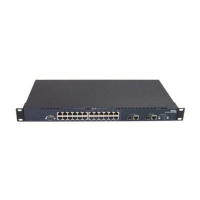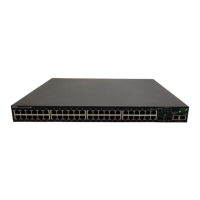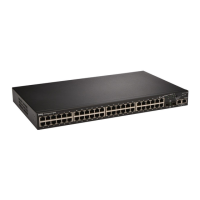Configuring the PowerConnect 3324/3348 Switch 85
Defining SNMP Settings
Simple Network Management Protocol (SNMP) provides a method for managing network
devices. Devices supporting SNMP run local software (agent).
The SNMP agents maintain a list of variables, which are used to manage the device. The
variables are defined in the Management Information Base (MIB). The MIB presents the
variables controlled by the agent. The SNMP agent defines the MIB specification format as
well as the format used to access the information over the network.
Access rights to the SNMP agents are controlled by access strings. To communicate with
the device, the Embedded Web Server submits a valid community string for
authentication.
The default community strings for the PowerConnect device are:
• Public— Allows authorized management stations to retrieve MIB objects.
• Private—Allows authorized management stations to retrieve and modify MIB objects.
If SNMP is not used:
• Change the default community strings to prevent unauthorized access to the
PowerConnect device.
• Delete both of the default community strings. SNMP management access to the
PowerConnect device is disabled if no community strings exist.
To delete the strings:
NOTE: To use the configure context, users must be assigned a privilege level of 15.
1 Ty p e Enable. The prompt displays the "#" sign.
2 Ty p e configure and press <Enter>, if the Privileged Exec level global configuration
context is not enabled.
3 Ty p e no snmp-server community private and then press <Enter> to delete the
private community string.
4 Ty p e no snmp-server community public and then press <Enter> to delete the
public community string.
5 Ty p e exit. The configuration context is exited.
6 Ty p e copy running-config startup-config and then press <Enter> to save the
configuration changes.

